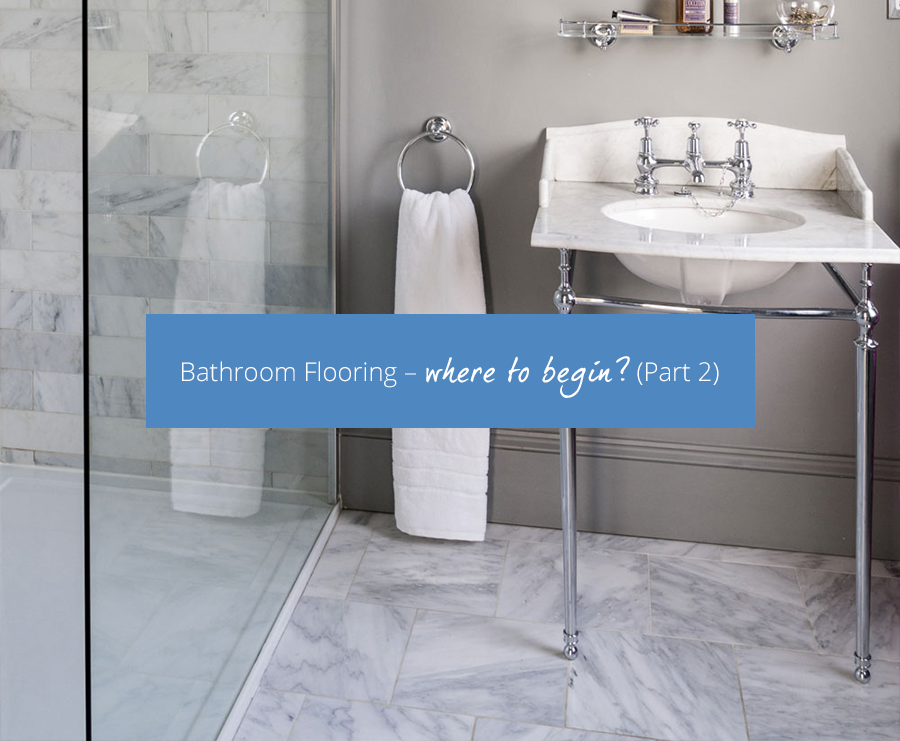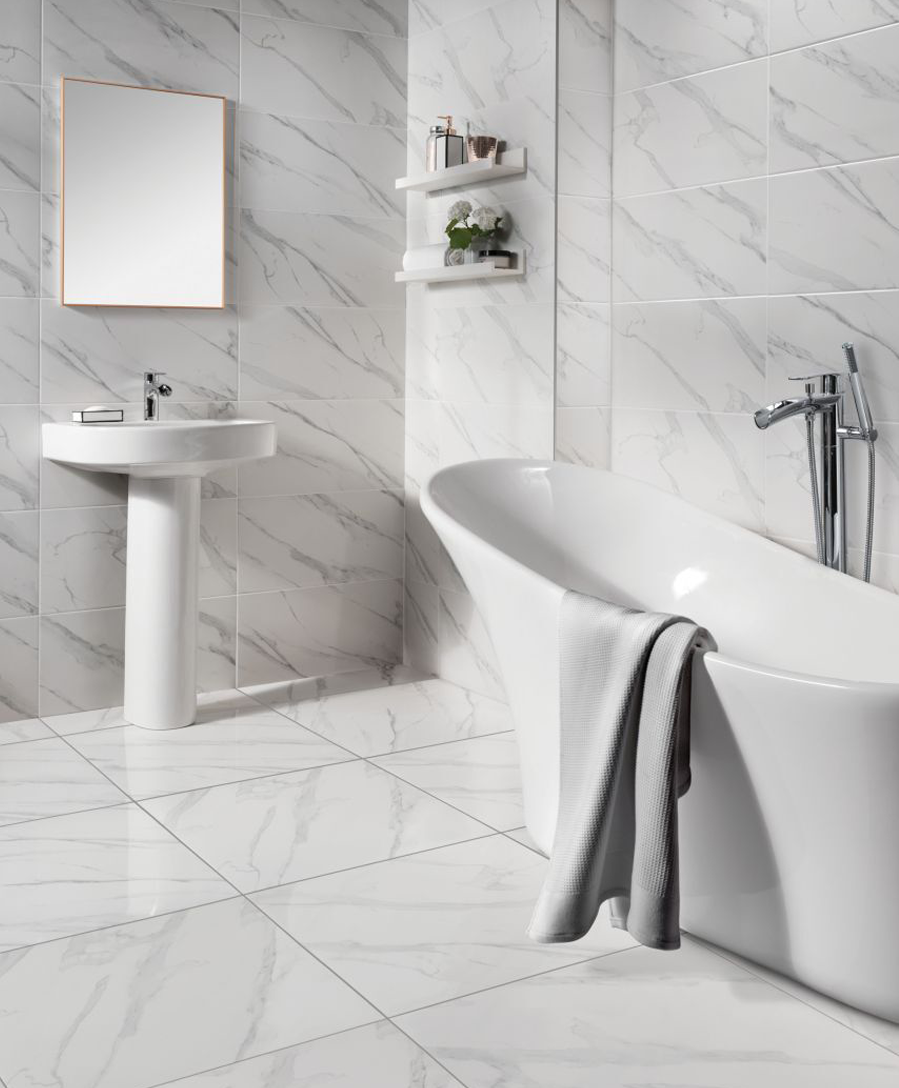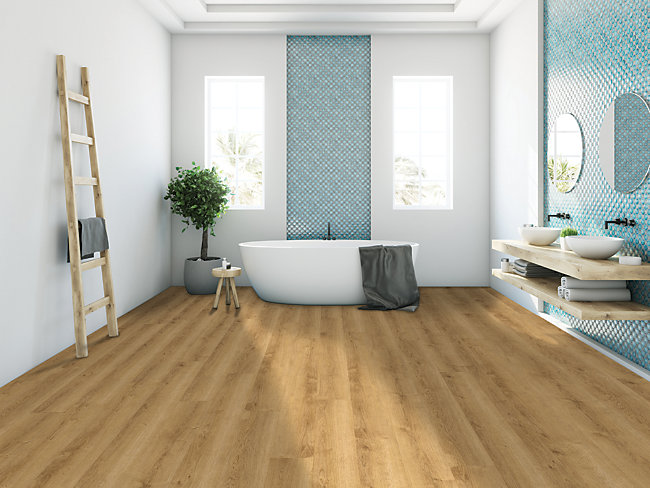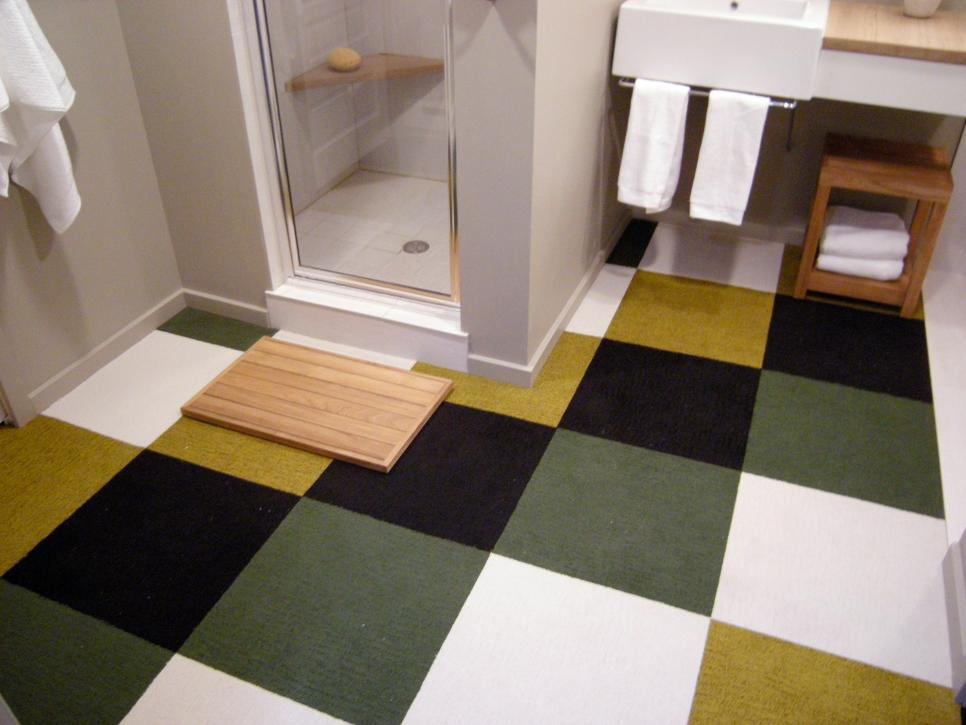Bathroom flooring – where to begin? (Part 2)
As mentioned in Part 1 of this blog, flooring is an important consideration when designing a bathroom, but it’s not always a straightforward one. When choosing a bathroom flooring material, it is key to take into consideration safety, cost, maintenance and aesthetics and, as is often the case, there are pros and cons for each. Below are 4 of the most popular flooring materials

Marble:
Pros
- Available in wide range of colours and design so highly likely to find something that suits your bathroom requirements
- As it’s a great conductor of heat, marble is a warm material and suitable for underfloor heating
- Is easy to replace if laying marble tiles – simply replace the cracked/chipped tile rather than the entire floor
- Can easily get scratched but difficult to repair so will require replacing
- Some household cleaning products can cause permanent discolouration
- Can be prone to water penetration and slippery when wet
- Should be installed by a professional as marble can easily crack break or chip if not done properly, increasing the cost
- Expensive in comparison with other bathroom flooring materials

Vinyl:
Pros:
- Easy to maintain as it doesn’t need a lot of cleaning and is stain resistant so cleaning with common household cleaners won’t damage of discolour it
- Is warm underfoot which is beneficial in colder months
- Is one of the cheaper bathroom flooring materials available and is durable, often lasting 15-20yrs
- Can be installed by homeowner or DIYer – no need to incur additional costs of professional installer
- Can be prone to yellowing with age
- Is non-biodegradable so not overly eco-friendly
- While durable and tough, it’s difficult to repair and if anything goes wrong needs to be replaced

Laminate:
Isn’t suitable for bathrooms as it warps if it comes into regular contact with water. However, a special bathroom laminate form exists. Make sure you check type carefully.
Pros:
- Cheap in comparison to other types of flooring
- Is easiest of all types to install so no need for a professional installer
- Is very easy to keep clean and maintain
- Is less water resistant than other materials and if puddles of water are left to stand they may damage the laminate flooring
- If the laminate gets damaged it can’ be refinished or repaired, only replaced
Carpet/Carpet tiles:
Pros:
- Is comfortable and warm underfoot - underfloor heating therefore not required
- Is very versatile - available in a wide range of colours and styles
- Can be prone to water penetration – water can seep through carpet and damage floor beneath
- Prone to mildew and mould which can be an issue in the humid environment of a bathroom if not aired thoroughly

Porcelain:
Comes either glazed or unglazed – while glazed tiles don’t need to be sealed when installing them, they can become chipped or damaged and become slippery when wet. Unglazed tiles are safer and less likely to get damaged but need to be sealed and grouted when installed otherwise the floor beneath will get damaged.
Pros:
- Easy to clean and maintain with standard household cleaning materials
- Durable and long-lasting
- Very versatile as available in wide range of colours and stylish designs
- Can be cold underfoot and therefore is often combined with underfloor heating
- Is more expensive than laminate, vinyl and carpet
- Can be difficult to install as needs to be cut carefully to fit around sanitaryware, often incurring the additional cost of a professional
The Compare Network
Copyright – Insight Retail Group Ltd 2025 All rights reserved